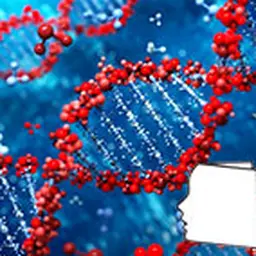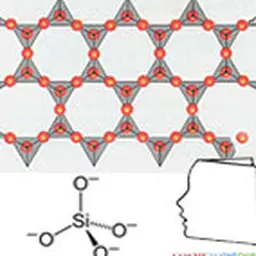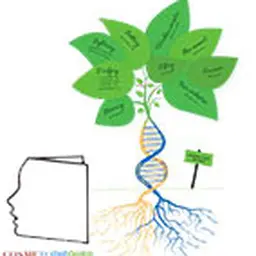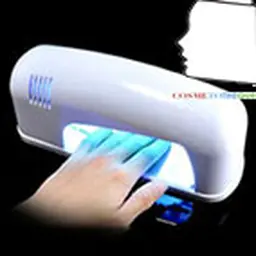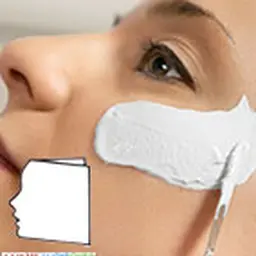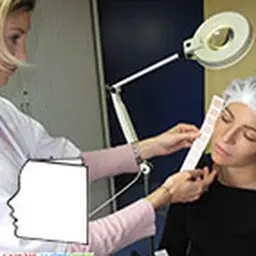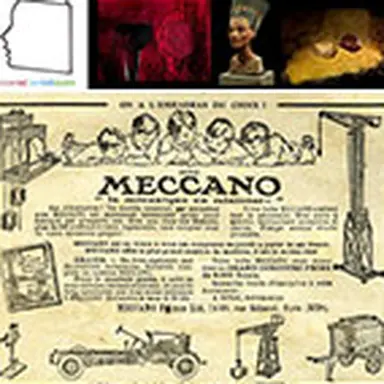
Little boys have known the , this simple but ingenious toy that introduced them to the logic of mechanical assembly and assemblies. Little girls, when they grow up, may also be interested in mechanics, but to manage their beauty through a new science called mechanobiology.
This science is revolutionizing many areas of research, from the study of embryonic development to the fight against cancer and tissue engineering.
For two decades, mechanobiology has studied how cells and tissues respond to the mechanical conditions of their environment. Some would say that these applications have been known for a long time. Indeed, skin biologists know that mechanical stimulation is one of the basic properties of the extracellular matrix. It is always spectacular to see how a collagen lattice contracts under the effect of mechanical tension. Techniques have also been developed in this direction. But mechanobiology is undergoing a spectacular revival because it benefits in particular from new techniques allowing cells to be observed almost directly deformed, resist pressure, reorganize their cytoskeleton or trigger cascades of biochemical reactions to external mechanical forces.
One of the key concepts of this science is mechanotransduction, that is, how the cell integrates the mechanical signal and transforms it into a biochemical signal allowing it to react, adapt and even modify the expression of its genes. In this diagram, we see how mechanical stimuli can easily be transformed into a biochemical signal by skin cells.
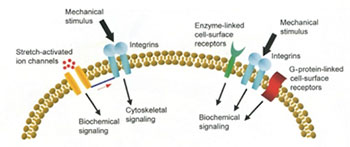
Another major field of mechanobiology: understanding the perpetual mechanical interaction of cells between themselves or with the matrix surrounding them, which allows them to form coherent tissues. Researchers are trying to understand how epithelial cells, such as those that form the kidney tubules, skin or intestinal wall, communicate via mechanical forces to coordinate their movements and strengthen their cohesion.
Applications to the skin have already existed such as the very old Pincé Jacquet and the techniques of Endermologie™ which are based on this principle. For this purpose, the contribution entitled Instrumental beauty: mechanical stress . But new applications were becoming evident. This is what is applied to several research teams, including L'Oréal Research and Innovation. In collaboration with several institutes, L'Oréal researchers have used advanced imaging techniques to study the movement of vibration waves on cutaneous tissues. ex vivo and in vivo and optimize their effects. They have shown that vibrations can modify two key properties of skin tissues: they strengthen the dermis-epidermis junction and improve the production of the extracellular matrix. The best results were observed at a frequency of 75 Hz, identified as the optimal frequency generating 9,000 micro-massages per minute. All of these results were the subject of a published in PlosOne in 2017:
After nine years of research in collaboration with the Mechanobiology Institute and the Medical Biology Institute of Singapore, the Langevin Institute and the Denis Diderot University in Paris, L'Oréal's Research & Innovation department has developed a first instrument based on discoveries related to mechanobiology, an original massage head with anti-aging effects on wrinkles and the contour of the face, lips and neck.
Thus, the concept of cosmetic products is changing significantly to include more and more often elements other than the more or less direct biological action associated with what are incorrectly called active principles. From the action of different types of stress or stimuli such as the one described in this article, but also light, cold or other elements of this type, through the direct effects of environmental conditions, beautiful days are still to come.
|
Contribution made by Jean Claude Le Joliff A biologist by training, Jean Claude Le Joliff was a man of R&D for many years. Successively in charge of R&D, then of Research and Innovation in a large French cosmetics and luxury group, and after an experience of creating a research centre (CERIES), he turned to innovation management. He has also been an Associate Professor at the University of Versailles, Saint Quentin (UVSQ) and remains a lecturer in several specialized courses: ISIPCA, IPIL, ITECH, UBS, UCO, SFC, etc. He is the founder of inn2c, an R&D and Innovation consulting company. Consultant to several international companies, he has actively participated in projects such as Filorga, Aïny, Fareva, and many others. He created the Cosmétothèque®, the industry's first conservatory of crafts and know-how. |





